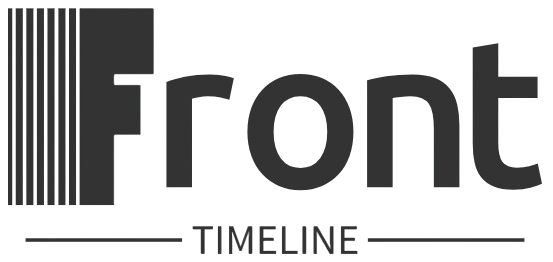Mastering Timelines for Seasonal Content
With the ever-evolving landscape of digital marketing and content creation, businesses are constantly challenged to stay ahead of the curve. One crucial aspect of this challenge involves managing timelines for seasonal content effectively. Whether it’s holiday promotions, seasonal trends, or special events, aligning your content strategy with the calendar can make or break your marketing efforts.
In this comprehensive guide, we will delve into the intricacies of managing timelines for seasonal content. From understanding the importance of timing to crafting a strategic content calendar, we will explore every aspect of this essential practice. So, grab a cup of coffee and let’s dive into the world of seasonal content management!
The Significance of Timely Content

Creating and distributing content in a timely manner is key to engaging your audience and driving conversions. Seasonal content allows you to tap into the collective consciousness of your target market, leveraging their existing mindset and preferences to promote your products or services effectively.
Consider the impact of holiday-themed content during the festive season. By aligning your marketing efforts with major holidays like Christmas or Halloween, you can capture the attention of consumers who are already in a celebratory mood. This not only increases your brand’s visibility but also enhances the relevance of your message, making it more likely to resonate with your audience.
Furthermore, timely content can help you stay ahead of your competitors by capitalizing on emerging trends and industry developments. By monitoring seasonal shifts in consumer behavior, you can adapt your content strategy to meet changing demands, ensuring that your brand remains at the forefront of your target market’s mind.
Building a Strategic Content Calendar

One of the most effective ways to manage timelines for seasonal content is by creating a comprehensive content calendar. A content calendar is a roadmap that outlines the content you plan to create and distribute over a specific period, allowing you to stay organized and focused on your marketing goals.
When building a content calendar for seasonal content, consider the following factors:
1. Identify Key Seasonal Events

Start by identifying the key seasonal events that are relevant to your industry or target market. This could include holidays, festivals, industry conferences, or even specific trends that are popular during certain times of the year. By understanding the timing and significance of these events, you can tailor your content to align with the seasonal theme.
2. Set Clear Objectives

Determine the goals you want to achieve with your seasonal content. Whether it’s increasing brand awareness, driving website traffic, or boosting sales, having clear objectives will help you create focused and impactful content that resonates with your audience.
3. Create a Content Schedule
Outline a detailed content schedule that includes the type of content you plan to create, the channels you will use to distribute it, and the deadlines for each piece of content. This will help you stay on track and ensure that you meet your publishing deadlines without compromising on quality.
4. Allocate Resources
Identify the resources you need to create and distribute your seasonal content, including budget, manpower, and tools. By allocating resources wisely, you can maximize the impact of your content and achieve your marketing objectives effectively.
5. Monitor and Measure Performance
Regularly monitor the performance of your seasonal content to evaluate its effectiveness and make necessary adjustments. Use key performance indicators (KPIs) such as website traffic, engagement metrics, and conversion rates to gauge the success of your content and optimize your strategy for future campaigns.
Case Study: Starbucks’ Seasonal Content Strategy
One notable example of a brand that excels in managing timelines for seasonal content is Starbucks. Known for its iconic seasonal beverages and merchandise, Starbucks has mastered the art of leveraging seasonal themes to drive customer engagement and increase sales.
Throughout the year, Starbucks introduces a variety of seasonal promotions, such as the Pumpkin Spice Latte in the fall or the Peppermint Mocha during the holiday season. By aligning these promotions with popular seasonal trends, Starbucks creates a sense of anticipation and excitement among its customers, driving foot traffic to its stores and boosting sales.
Moreover, Starbucks uses its social media platforms to generate buzz around its seasonal offerings, sharing visually appealing content that highlights the unique features of each promotion. By creating a sense of urgency and exclusivity, Starbucks encourages customers to try its seasonal products before they are gone, creating a sense of FOMO (fear of missing out) that drives sales and brand loyalty.
Optimizing SEO for Seasonal Content
Another important aspect of managing timelines for seasonal content is optimizing your content for search engines. By incorporating relevant keywords and phrases related to seasonal events or trends, you can improve the visibility of your content and attract organic traffic to your website.
Here are some tips for optimizing SEO for seasonal content:
1. Conduct Keyword Research
Identify the keywords and phrases that are relevant to the seasonal events or trends you are targeting. Use keyword research tools like Google Keyword Planner or SEMrush to discover popular search terms and incorporate them strategically into your content.
2. Create Seasonal Landing Pages
Develop dedicated landing pages for your seasonal content to enhance its visibility and relevance. Optimize these pages with targeted keywords, compelling meta descriptions, and engaging visuals to attract organic traffic and encourage conversions.
3. Update Meta Tags and Titles
Optimize your meta tags and titles with seasonal keywords to improve your content’s ranking on search engine results pages (SERPs). Include relevant terms in your meta descriptions and titles to make it easier for users to find your content when searching for seasonal topics.
4. Leverage Local SEO
If your business targets local customers, optimize your content for local SEO by including location-based keywords and phrases. This will help you attract customers in your area who are searching for seasonal events or promotions near them, increasing foot traffic to your physical store or website.
5. Monitor Performance and Make Adjustments
Track the performance of your seasonal content using analytics tools like Google Analytics or Moz. Monitor key metrics such as organic traffic, bounce rates, and conversion rates to evaluate the effectiveness of your SEO strategy and make necessary adjustments to improve results.
Common Misconceptions About Seasonal Content
Despite its importance, managing timelines for seasonal content is often misunderstood or overlooked by businesses. Here are some common misconceptions about seasonal content that you should be aware of:
1. Seasonal Content is Only Relevant to Retail Businesses
While seasonal content is commonly associated with retail businesses, it can be valuable for companies in any industry. By tapping into the seasonal mindset of your target market, you can create engaging content that resonates with your audience and drives conversions, regardless of your product or service offering.
2. Seasonal Content is Limited to Major Holidays
Seasonal content extends beyond major holidays like Christmas or Thanksgiving. It can include a wide range of events, trends, or cultural celebrations that are relevant to your target market. By diversifying your seasonal content strategy, you can engage your audience throughout the year and maintain a consistent presence in their lives.
Frequently Asked Questions About Managing Timelines for Seasonal Content
1. How far in advance should I plan my seasonal content?
It is recommended to plan your seasonal content at least 1-3 months in advance to allow sufficient time for content creation, approval, and distribution. This will ensure that you have a well-executed strategy in place and can capitalize on seasonal trends effectively.
2. What types of content are most effective for seasonal campaigns?
Popular types of content for seasonal campaigns include blog posts, social media posts, email newsletters, and video content. By leveraging a mix of content formats, you can reach a wider audience and engage them across multiple channels.
3. How can I measure the success of my seasonal content?
You can measure the success of your seasonal content by tracking key performance indicators (KPIs) such as website traffic, engagement metrics, conversion rates, and sales. Use analytics tools to gain insights into the effectiveness of your content and make data-driven decisions for future campaigns.
To Wrap Things Up
Managing timelines for seasonal content is a crucial aspect of any content marketing strategy. By aligning your content with seasonal events and trends, you can capture the attention of your audience, drive engagement, and achieve your marketing goals effectively. Remember to create a strategic content calendar, optimize your content for SEO, and monitor performance to ensure the success of your seasonal campaigns. So, roll up your sleeves, get creative, and start planning your next seasonal content masterpiece!




